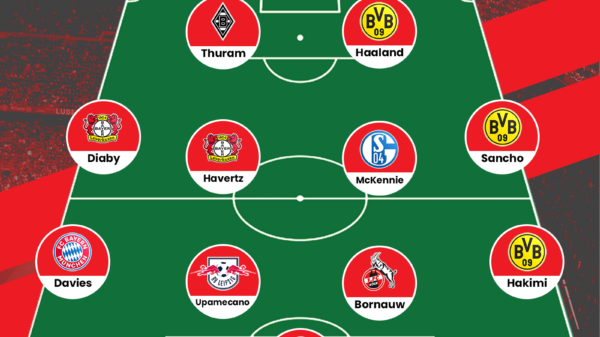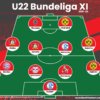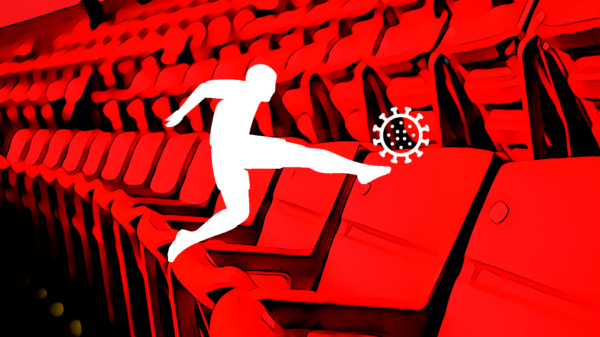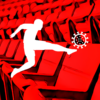Abhijit Bharali provides an in-depth tactical analysis of the Bundesliga match that finished Bayer Leverkusen 5-0 Borussia Monchengladbach.
Bayer Leverkusen edged high-flying Borussia Monchengladbach for most of the first hour of the match before the floodgates opened for what turned out to be a feast for die Werkself‘s two strikers, Stefan Kiessling and Javier Hernandez, the Mexican scoring his first hat-trick in Leverkusen colours.
An hour of finely poised action was soon to be a rout for the home side, as Gladbach were punished for their lack of conviction in the attacking third combined with Bayer’s craftily created and ruthlessly finished goals. Both clubs saw their Champions League run for the season end in midweek, but Gladbach were on the back of last weekend’s stunning 3-1 win over Bayern Munich.
Meanwhile, Roger Schmidt and Leverkusen have failed to convince this season, and had only won once in their last eight games. Schmidt named a similar side to the one that dominated Barcelona in midweek, with only Keissling replacing Admir Mehmedi as Bayer went for a more simplistic 4-4-2 with two men up front, although Kiessling dropped short on occasions to contest in aerial duels as well as helping in build-up phases.
Andre Schubert’s Gladbach had a similar, narrow look about their team, as Josip Drmic came in for Raffael up front, and Ibrahima Traore and Tony Jantschke replacing the injured Fabian Johnson and Nico Elvedi from the Manchester City game. Lars Stindl, like Kiessling for Bayer, roved around the pitch, but unlike Kiessling, had very little in the form of decisive attacking contribution.
Bayer Leverkusen 5-0 Borussia Monchengladbach
Line-Ups
Bayer Leverkusen: 1. Leno // 13. Hilbert, 4. Tah, 21. Toprak, 18. Wendell // 38. Bellarabi, 23. Kramer, 44. Kampl, 10. Calhanoglu // 7. Hernandez, 11. Kiessling
Borussia Monchengladbach: 1. Sommer // 24. Jantschke, 3. Christensen, 6. Nordtveit // 27. Korb, 8. Dahoud, 34. Xhaka, Wendt // 16. Traore, 13. Stindl, 9. Drmic
Patterns Of Play
Leverkusen set up in what was a 4-2-2-2, with Kevin Kampl and Christoph Kramer the central midfield pair, with Hakan Calhanoglu and Karim Bellarabi playing ahead of the midfield duo along the wide areas while Kiessling and Hernandez played up front, but not as a traditional striker pair.
Bayer defended in a high line, with both their full-backs, Wendell and Roberto Hilbert, playing in the Gladbach half for the majority of the game. Hilbert was more adventurous from the right, tucking inside on occasions as well as hugging the touchline. It was Hilbert’s cross which helped open Leverkusen’s scoring from a move started by the right-back himself.
Bellarabi on the right was more direct than Calhanoglu on the left, often making runs beyond the Gladbach defence as the furthest Leverkusen attacker. The German’s high positioning was one of the tactical keys of Schmidt’s side (in details later); his tenacity, trickery and pace make him Bayer’s preferred attacking outlet.
High Press
Schmidt’s high pressing schemes are well-documented, and a similar tactical narrative was at play at the BayArena. Leverkusen pressed high like they usually do, leading to their high defensive line in front of goalkeeper Bernd Leno. They were also helped by Gladbach’s conservative structure, as the Foals’ midfield maintained its vertical compactness to protect Granit Xhaka from being overrun.
Gladbach’s initial shape of 4-1-3-2 had Xhaka as the deepest midfielder with Mahmoud Dahoud playing in a more box-to-box role. But initial developments in the game saw Dahoud sitting alongside Xhaka in the base of Gladbach’s midfield and left winger Ibrahima Traore tucking inside, as they formed a flat bank of four in midfield.
As evident from the diagram above, Leverkusen regained possession more in the Gladbach half which stemmed from their high pressing system. It also shows the passiveness of Gladbach throughout the game; only once in the entire game did they dominate proceedings: in the period between the start of the second half and Leverkusen’s second goal.
Hernandez, Kiessling and Bellarabi even pressed Gladbach goalkeeper Yann Sommer into hitting long goal kicks, preventing the away side from having any meaningful build-up from the back. This was in contrast to Gladbach, who were passive and let Leverkusen dictate play.
Kiessling The Target Man
As we can see from the following passage of play where Leverkusen are afforded little space to develop an attack through the left flank, Kiessling’s use as a target through long balls was a way to bypass the Gladbach block and feed the two runners, Hernandez and Bellarabi.
Leno found Kiessling nine times during the game, both players’ highest combinations. Kiessling dropped short to win the aerial duels, and this also influenced Gladbach’s structure in midfield. With his height (taller than all the Gladbach players) clearly an advantage, Kiessling understandably won the majority of the aerial balls.
Kiessling dropping short forced Gladbach’s vertical compactness because of the number of Leverkusen players inside their half in anticipation of second and third balls from Kiessling’s knock-downs. In the following graphic, there are seven Leverkusen players inside the Gladbach half and six of them in the zone where the long ball is set to be played.
The deep Gladbach midfield structure meant the Foals’ pressing from the front was isolated and of little effect as Leverkusen’s build-up dynamics were variable and they mostly used the quickest option possible into Gladbach defensive third.
On one occasion, the two Gladbach forwards, Josip Drmic and Stindl, stole possession from Leverkusen but since the recovery was effected inside their own half, they failed to sustain the attack. One plausible route for the away side was attacking behind Leverkusen’s high line.
Gladbach Attacks
Both Leverkusen and Gladbach’s counter attacks were focused on attacking the isolated/passive zones. Gladbach were the team that sat back and waited to hit on the break, and their ideas were fairly good. Leverkusen kept a high line, which offered Gladbach plenty space behind to attack. The following switch from Traore aimed at exploiting the space behind Leverkusen’s back line.
But Leverkusen’s high pressing schemes afforded little time and space for Gladbach to effect such moves, and whenever they managed, it took a combination of poor decision making, ill-advised runs and woeful end product. Kampl was playing as an auxiliary left-back, so far ahead was Wendell, and this allowed a good opening for Gladbach to exploit.
Julian Korb, who is a right-back by trade, played as the right-sided wide midfielder and was prominently involved in Gladbach counters in the first half but came up short in the final third with poor crossing and even poorer finishing. Stindl, too, popped up on the right, but failed to make much of an impact in what was an ordinary first half display from Gladbach in attacking terms.
Gladbach’s ineptitude in attack owed much to Leverkusen’s good positioning, defensive structure and of course, pressing. In the following scenario, right-back Jantschke has time on the ball but no passing option available due to Leverkusen’s shape off the ball. Korb makes a run on the outside but Leverkusen’s structure catches him offside.
Second Half
Gladbach started the second half much more proactively and even brought on Raffael as an added attacking threat. Leverkusen retreated slightly but maintained their defensive shape, and looked for breaks as Gladbach poured forward in search of an equaliser. The following screenshot shows how different was Gladbach’s approach to start the second half with, following their timid first half display.
But Leverkusen kept their structure intact, not budging to increased Gladbach pressure which was ultimately rewarded as they burst their second half bubble by scoring four goals in 13 minutes which included the Hernandez hat-trick. The following scenario shows how die Werkself kept their structure in the second half, and refused to sit back on their one goal lead, albeit their pressing actions became more measured.
Leverkusen countered more at the start of the second half as Gladbach pushed forward, and only after Raffael hit the post in the 54th minute did they start to effect their natural pressing game more. Hernandez’s first goal stemmed from Leverkusen forcing a Gladbach mistake from a throw-in, and the game was over as a contest after Kiessling followed the second goal with a thumping header two minutes later.
Conclusion
For two thirds of the time, the game remained finely balanced with Leverkusen edging it with their overall positivity and a first half lead. Gladbach threatened in the second half but were undone by the ruthlessness of Leverkusen’s forwards; the Kiessling-Hernandez pair was the difference between the two sides, as the returning veteran Kiessling played to the book perfectly against a Gladbach side that showed some fight only in the second half.
Written by Abhijit Bharali
- Analysing Belgium’s tactical approach at the 2018 World Cup - June 17, 2018
- Tactical Analysis : Sevilla 0-0 Villarreal: Villarreal’s off-the-ball discipline denies Sevilla - February 8, 2017
- Indian Super League: Indian Team of the Tournament (League Phase) - December 12, 2016




































































